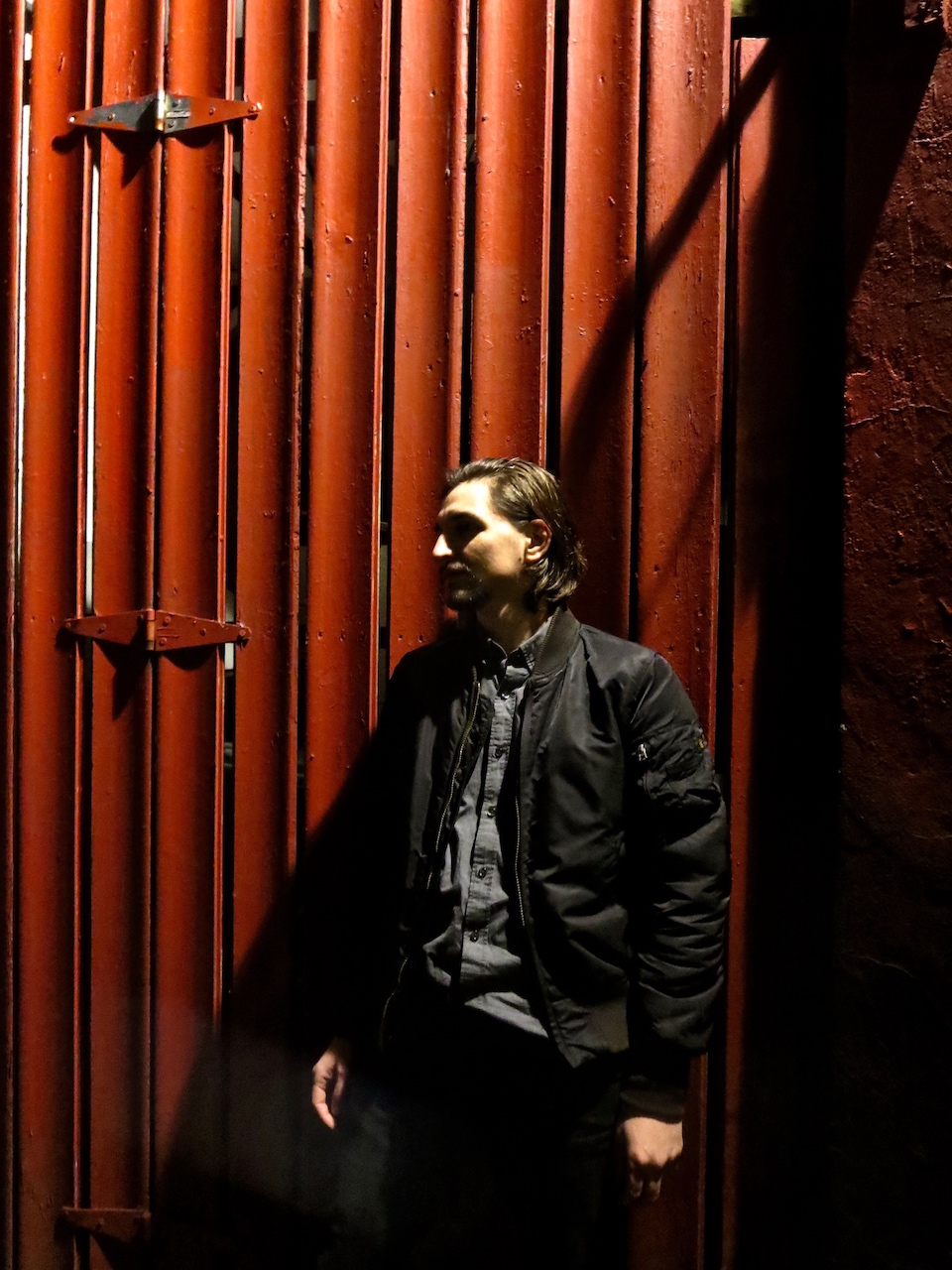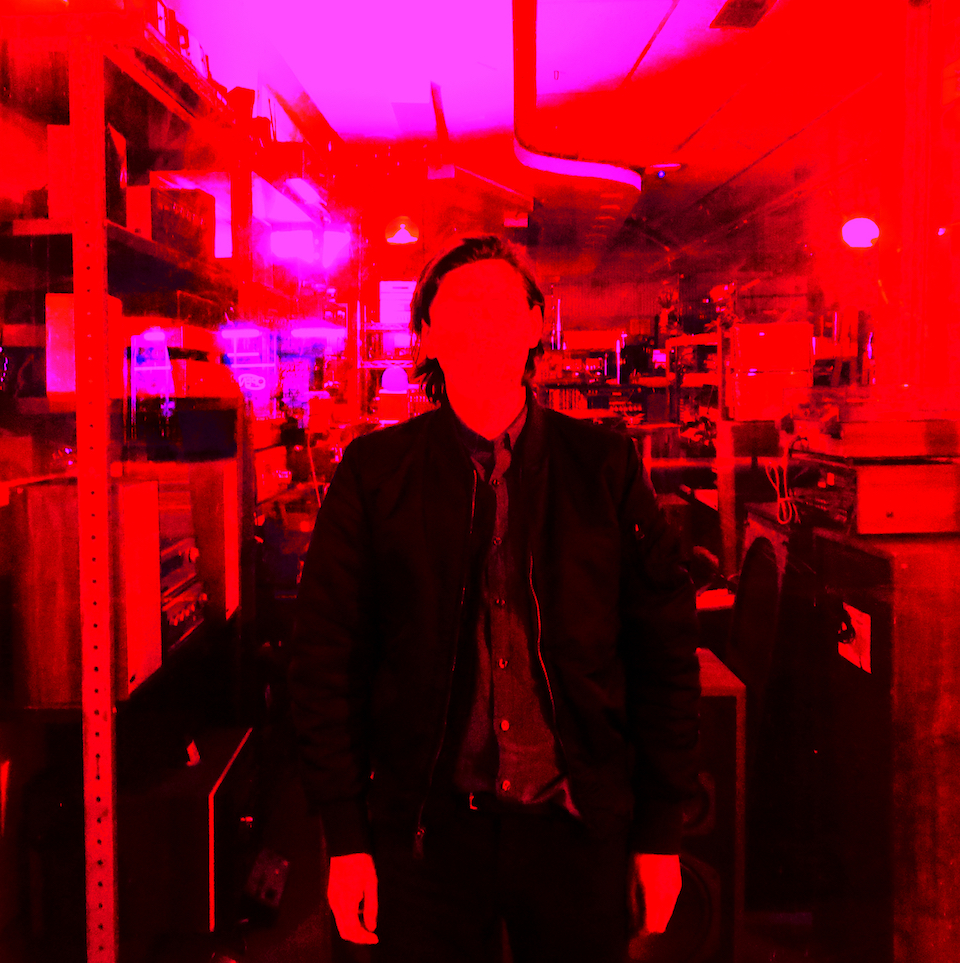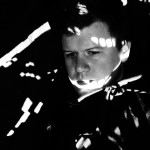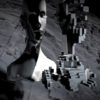If you’re wondering why the sci-fi leanings of Antwood’s Virtuous.scr LP sound alive yet artificial—referencing everything from manic footwork melodies to bloodthirsty Mortal Kombat MCs—the answer is simple: it’s the Canadian producer’s take on artificial intelligence gone awry. And while he could have gotten all technical, stressing the importance of patches and plug-ins in the IDM arms race, a sense of humor and self-awareness prevails.
Philip K. Dick would approve.
In the following exclusive, the part-time microbiologist shares the stories behind his songs—explaining every last detail, right down to the record’s gnarly Kenny G nods…
The record is vaguely about the development of an artifical intelligence—learning how to use search engines as information sources. It got me wondering; if the AI could access overlay networks (Tor, Onion, Darknet, etc.), what would it do with this information? Would a “no harm” principle be blunt force programmed into it, or could it be programmed to have a dynamic system of reasoning to make up its own ethics? What would these ethics be? Utilitarian, where the greatest happiness is priority, or deontological where rightness for the sake of rightness is priority? This is where the “virtuous” comes into the title, along with the “.scr” (a windows screen saver extension in the ’90s that was notorious for containing executable virus code).
These ideas were fluid and kind of transient when I made the record. I don’t want to go too hard into highfalutin conceptual stuff, but rather just offer some insight into my thought processes.
“A.L.I.C.I.A.”
This is the tone setter for the record. Maybe not instilling a sense of impending doom, but a sense of impending something… other, strange. It’s the first of three tracks that use the same melodic motif. There are some heavily processed HA’s in there to let the listener know “relax, it’s still just dance music”. A lot of the processing on those HA’s was outsourced to my friend who writes Max/MSP patches. This track also introduces a kind of aesthetic of competing sounds, which I think is a big component of the album. I don’t use side-chaining; I like to get in there and automate volume envelopes and all other parameters manually. As such, I can make one sound component slowly start affecting another, and competing for space in the mix, until one reaches a breaking point and has to dip in volume or change in some other some way. I feel like simply changing volume parameters can be one of the most powerful production strategies, because it allows you to shift the listener’s focus and emphasize different parts of the music.
“ANTHRACITE”
This was the first track written for the record. It was largely an exercise in layering all sorts of vocal chants I could get my hands on. The bulk of the voices are Tibetan chants and a VST called Crowd Choir—a crowd-sourced instrument that contains samples of 1000s of people singing notes in a three octave range. That kind of fit perfectly because the record is very Web-focused. It contains a lot of found sounds and YouTube rips. The track is composed of lots of rain, cars, robotic arpeggios, mechanical samples…. basically, dystopian speculative sci-fi cliche stuff. I think, however, the strange, overriding, not-quite-human vocals makes the track feel less like a trip through some neon cityscape, and more like some artificially constructed entity that has a voice.

“OVERLAY NETWORK”
An overlay network is a computer network that is built on top of another network, and I kind of wanted to achieve a similar sort of feeling in the music, with a solid underlying rhythm and a bunch of auxiliary textures added on top. There is a certain level of danger to the beat, like a machine with a lot power and big stature, clunking away. Like you should be wearing a hard hat if you’re going to approach it. I love FM synthesis and I think it really comes through in this track. I also used this really buggy freeware slap bass VST called Virtual Bass Unit, that sounds so awful it just works. Well, sometimes it literally didn’t work and caused my computer to crash. I’m not a big gear guy, but I did add some X0XB0X and JV-1080 hardware in there to grit it up.
“LUNG”
Made in large part by the sounds of breathing, crackling lungs heard through a stethoscope, CPAP breathing machines, and ASMR mouth-play. Maybe the breath of life into the machine. Would an android ever need a lung? How much like a human could an AI be if it doesn’t share the same evolutionary history, and isn’t motivated by biological necessities, like the need to keep breathing? When it comes down to it, humans are biological organisms. Our actions are largely about minimizing pain and facilitating group cohesion, and self-perpetuation is our endgame. In order to make a sentient machine truly human-like, it may need to be completely like a human; it would need to feel pain, and behave based on a sense of its own mortality, and maybe even breath. The Mortal Kombat voice samples are kind of an indirect reference to Google DeepMind’s decision to make their AI play Doom like a human. That is such a strange choice—kind of darkly ironic that they would get an AI to play one of the most violent games out there.
“INTERLUDE PART II”
Same melody as the first track, more or less. A transition before the next phase of record. I’m also a sucker for a good tornado siren.

“SNEAKERS”
This is one of the only 160 bpm tracks on the record. A lot of the texture here comes from gravel and avalanches combined with sounds of different liquids. There is a tuned glass break added to the the kicks that I think is a trip to listen to. It’s similar to “Anthracite” in sound palate, but with much more intent and menace. If “Anthracite” was the conception of the AI, “Sneakers” is the AI morphing into something unexpected and unpredicted, possibly violent. I’m just realizing now that a couple of my track titles reference sneakers, including “Anthracite.” In a way, sneakers encapsulate these themes of tech, modernity, and novelty, as well as how ethics fits into the equation. For example, a fresh pair of Nike Roshe Flyknits are nice, but what about the morality of outsourcing labour, or using cheap petroleum-based materials? The ethics and politics here can be argued from different positions, but there does seem to be this dichotomy between novelty and integrity, profit and sustainability. Music is similar in this way; it’s a consumer product. A lot of music is poorly made, for the wrong reasons, and wears out quickly like a sneaker. For instance, a friend compared the rise in popularity of EDM to the ’90s dot com bubble, where so much stock is being put into what is in large part vapid and substance-less, ready to burst.
“Spirit Fabric”
I wanted to take my hi-hat sequencing to absurd levels. Sometimes I feel like a large part of electronic music in the 2000s can be summed up as “what can I do to completely obliterate this this hi-hat?” I found if you mix 808 hats with bike peddling foley and automate super fast delays you can achieve some pretty weird stuff. There’s also some sequenced sample degradation on the hats, and obviously a ton of panning. The second half of the track also has a shifting tempo, which gives it a sort of stride effect. This is one of the tracks that works out to effectively reconstitute current electronic music trends. There’s obvious nods to trap sounds, vogue, bass music, footwork, etc. in many of the tracks. But there is something definitely off about it, and it ends up falling into a kind of uncanny valley of popular music.
“PROTOTYPE HA”
When I was told that this one sounded a little like “Sandstorm,” I knew I was on the right track.
“REALIZATION”
The record takes a turn here. It kind of moves away from brutal aesthetics, like sirens, breaking glass, and mechanical noises, and adopts a lighter, more sentimental touch, which is a lot more ominous sounding. It kind of reaches a point where it triggers emotions, but remains completely synthetic and un-relatable. There’s nothing left to chance in the structure or execution of these tracks; everything is completely automated and heavily processed. I guess the title refers to a kind of epiphany had by the AI—an awakening, and a manifestation of “emotional intelligence”, whatever that may be. I also worked in some of the melodic ideas from Max Richter’s record Sleep in the middle of the track—maybe a nod to the question of whether a machine could ever dream. There’s also the obvious reference again to current and future consumer culture, especially with the crystal clear Koodo jingle. It’s kind of this emerging sense of being hyper-aware of hyper-reality and being totally, constantly immersed in advertisements. Like my use of musical tropes, I wanted to decontextualize familiar, ear-wormy and disposable artifacts from consumerism and basically take the piss out of them.
“65.222.202.53”
I wrote the melody to this track on guitar in 2011 after the loss of a pet:
I wanted to revisit something personal and emotional, but through the lens of this reductionist, non-human thing. How would an AI deal with the loss of a pet? Could it even have a pet, or would it itself be a kind of pet, or a novelty? Would it see us as pets? Like “Realization,” I wanted the track to hit certain emotional notes, but have a strong sense of strangeness and automation. Also, as it starts to hit a climax at the end, it just stops….
“UNCANNY VALLEY”
Maybe the punishing aesthetics didn’t completely go away. If an artificial moral agent were to have emotional awareness, there’s a likelihood that it could feel some degree of anger. This track definitely hints at anger and frustration. And the shitty stock metal vocals processed through a huge chain of effects adds a kind of synthesized, youthful rage. AI puberty. There are some Kenny G vapors that pop up here and there—kind of like the AI doesn’t know how to properly contextualize music genres, and mixes them based on some internal logic or algorithm.
“YONTOO HOW TO GET RID”
The third track to use that same melody. This melody was kind of pieced together by watching YouTube videos or people playing those flying saucer-looking hang drum things. I was trying to figure out the tuning by just plugging notes into the sequencer until it sounded the same. I like the rough sounding steel pan on the Roland SC 55, so I went with that. The melody is initially straightforward, recognizable, almost pretty. Then halfway through it implodes on itself, cycling trough synthesized forms and found sound, a lot of which appeared earlier on the record in a different context.
To me, “Anthracite” was like a prediction of what the AI was going to be, with an emphasis on dark, broody, dystopian imagery, while “Yontoo” is like the actual manifestation, composed of similar building blocks but completely unrecognizable and unpredictable—the result of an autonomous entity forming unanticipated connections in its neural network. Some of the track structure was made without even listening to it at first, just sequencing and automating based on really simple math patterns and the way it looked visually in the DAW. I took the resulting sonic peaks and valleys and fleshed them out more, added more texture. That idea of things competing for space in the mix is really brought to the forefront here, where it’s sometimes hard to make sense of what the sounds are doing or what logic they’re following.
One thing I tried to do was start the record off with well-worn electronic music tropes, effectively disarming the listener and creating an opportunity to deeply subvert the structure of the music and create a unique listening experience. By the end of the album, there aren’t really any recognizable electronic music samples, and something else has changed, but it’s hard to say what, or when and where it happened. This is why I’m really happy Planet Mu gave me the opportunity to write a full LP, where I could take my time and fully explore the musical, and non-musical ideas.





